RECOIL OFFGRID Survival Improvised Evacuation Methods
In This Article
Learning how to evacuate an injured person from a hazardous or remote location, such as an active-shooter event or a backcountry hike gone wrong, is like paying down your credit card bill rather than buying new stuff every month — in your heart you know you should do it, but it’s just not as fun or as sexy as other options.
We believe in a holistic approach to preparedness and recognize that it’s just as important to know how to save the lives of others as it is to protect your own. To find out more, we spoke with Eric Soderlund, who has worked as a detective for a large Florida county law enforcement agency for the last 13 years. Prior to that, he served as U.S. Army military policeman (95B, now 31B) for eight years. He's on the board of advisers for the Committee on Tactical Emergency Combat Care (CTECC) and serves on the training cadre for the Florida SWAT association’s tactical EMS course.
“It’s great to have a gun on you,” Eric says, “But it’s about more than just being armed. Like we saw in Las Vegas, all of those 3,000 people in the crowd could have had a gun on them, and it wouldn’t have done any good. So we need to be a student of the game. And these days the game includes medical training and knowing how to move injured people.”

Disclaimer: This article is meant to be an overview and not a detailed guide on evacuating injured individuals to safety during an emergency. Seek professional medical training before attempting any of these techniques.
In the event that casualty evacuation becomes necessary, Eric encourages trainees to first take a good look around them. This doesn’t mean to go all MacGyver and build an ultralight hang-glider to escape out a window. Instead, keep it simple and just think about what makes sense. “Look at the environment and see what’s ready to use,” Eric says. “If you have a minute to look around, see if there’s something that can make your life a little easier.”
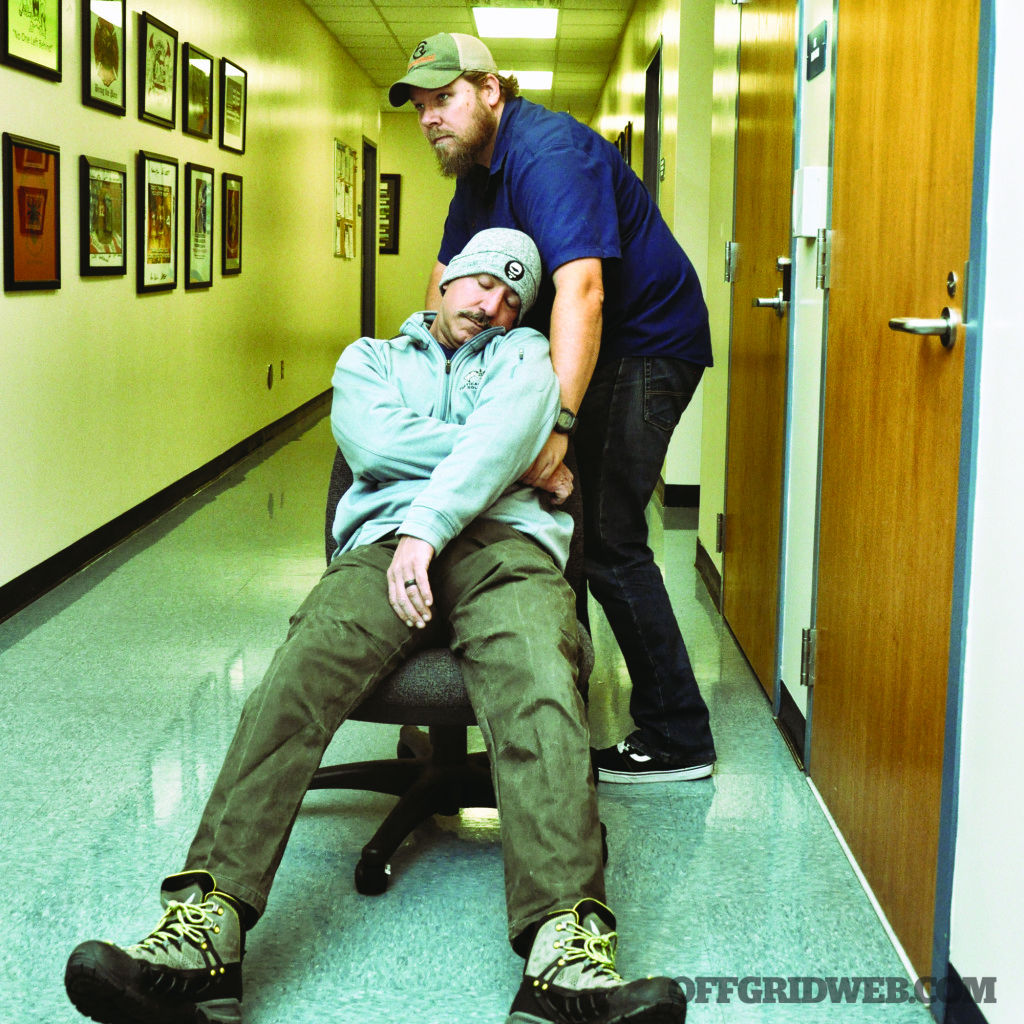
Look at your environment and ask yourself what you have at your disposal that could serve as an improvised gurney or...
If you’re in an office environment and a casualty can’t walk, consider grabbing one of those ever-present rolling desk chairs, placing them in the chair, and wheeling them out. You may have to hold them from behind to keep them upright, but it’ll still be easier than simply trying to drag them out with your bare hands. “You don’t necessarily have to be Captain Caveman, and lift and carry everything,” Eric adds. “Work smarter, not harder.”
Otherwise, if you’re not immediately faced with a direct threat and you have at least one other person to help you, you could improvise a litter (like a flexible stretcher) out carpeting on the floor. With the casualty laying down, cut an outline around them using your knife. Then cut slits for handholds on the sides and another at the head, and roll your patient inside the carpet Corleone-style just like you’ve seen in all those mafia movies. This will allow you to grab the carpet much more easily and slide the casualty along the floor with much less friction than otherwise. And if you decide that you do want to add a dash of MacGyver, threading a pole or mop handles through the cutout slits provide an even easier handhold and improve the rigidity of the litter as well.
For those who work in the same place every day, it makes sense to occasionally look around and think about what you could use, and how you might be able to get out. “Think about your situation ahead of time,” Eric says. “If you’re in a high-rise building where a fire on top and bottom is a real possibility, would you consider base jumping off the roof? That’s an extreme example, but the idea is to look at your environment and consider the possibilities. Think outside the box of leaving the building using the stairs or an elevator.”
Many wooden doors can be broken down with a mule kick. However, metal doors, as we’d find in a commercial or office environment, aren’t quite so easy. But if we think outside the box we might find that the walls either side of that door are made from drywall and metal studs. In that case, there’s a good chance you can bust through the drywall to access the other side.
A commercially available Breach Pen cutting tool can be used to burn your way through padlocks or chained doors, and is much more portable than a bolt cutter. This lightweight and packable tool, about the size of a small flare, allows you to burn your way through any number of barriers. Additionally, also consider keeping a fire-suppression tool on hand, like a compact aerosol spray can fire extinguisher, such as those from Blaze Defense Systems, which can quickly cool red hot metal to hand-holdable temperatures.
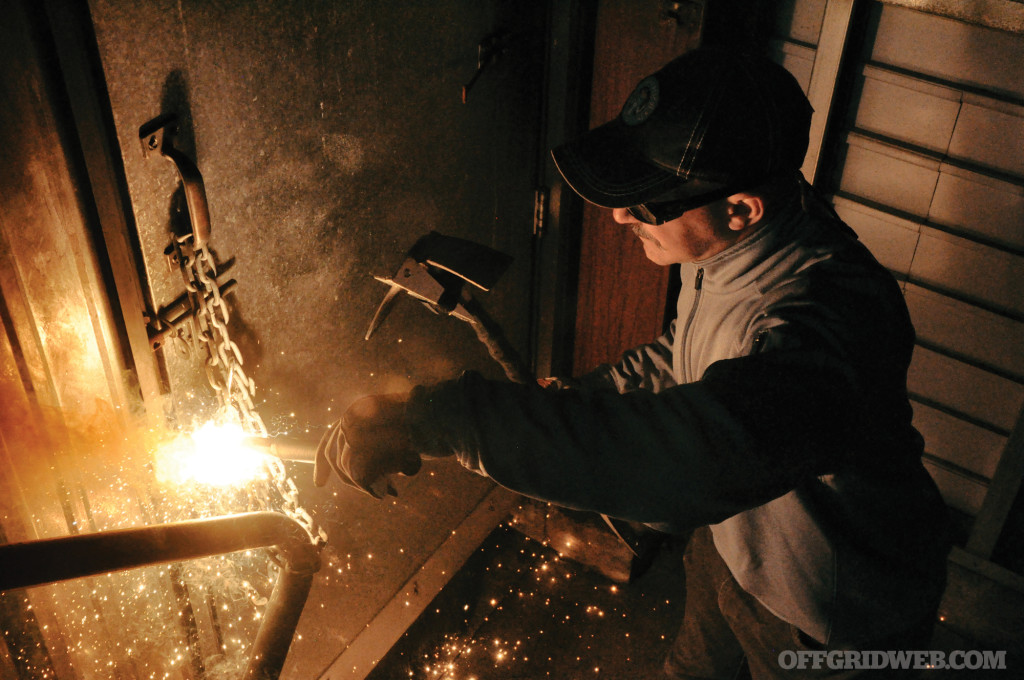
Breach Pen is a small, portable tool to quickly cut through locks and other metal materials that may be impassable...
Additionally, many office buildings have drop ceiling tiles. If you can climb into the dropped ceiling space, you may well be able to bypass locked doors and access other areas.
Last, consider breaking through windows to get out. Ten to 15 years ago it’d never be an issue to break glass. But depending on your location, the glass might be impact or hurricane-rated, so you can’t necessarily just throw a chair through it. To mitigate this, you could consider using a glass-breaking tool offered on some fire-rescue–style knives such as the TOPS/BUCK CSAR-T. If necessary, you might also think about shooting through the glass, after taking a look to see what’s outside first.
“Just remember,” Eric says, “you own every single round that comes out of that barrel, regardless of what kind of crazy situation is going on. So maybe consider shooting out a lower corner of the window so you’re aiming at the ground, reducing the likelihood of collateral damage.”
In an ideal situation, you’ll have a full-size EMS stretcher next to you, like the ones you see EMTs load into rescues (ambulances). It’s 100-percent rigid, so all of the force you use to push (or pull) the stretcher translates directly into moving the stretcher. Realistically, of course, that’ll never happen. So we trade rigidity for improved portability, and we use packable soft litters instead of stretchers.
As litters get lighter and more portable, they also get more flexible, which isn’t necessarily a good thing. With a more flexible litter, the force that would’ve moved your patient is more likely to just bend your patient. It’s analogous to pushing a sturdy wooden crate versus trying to push a canvas sack, or worse, a thin plastic bag filled with oranges.
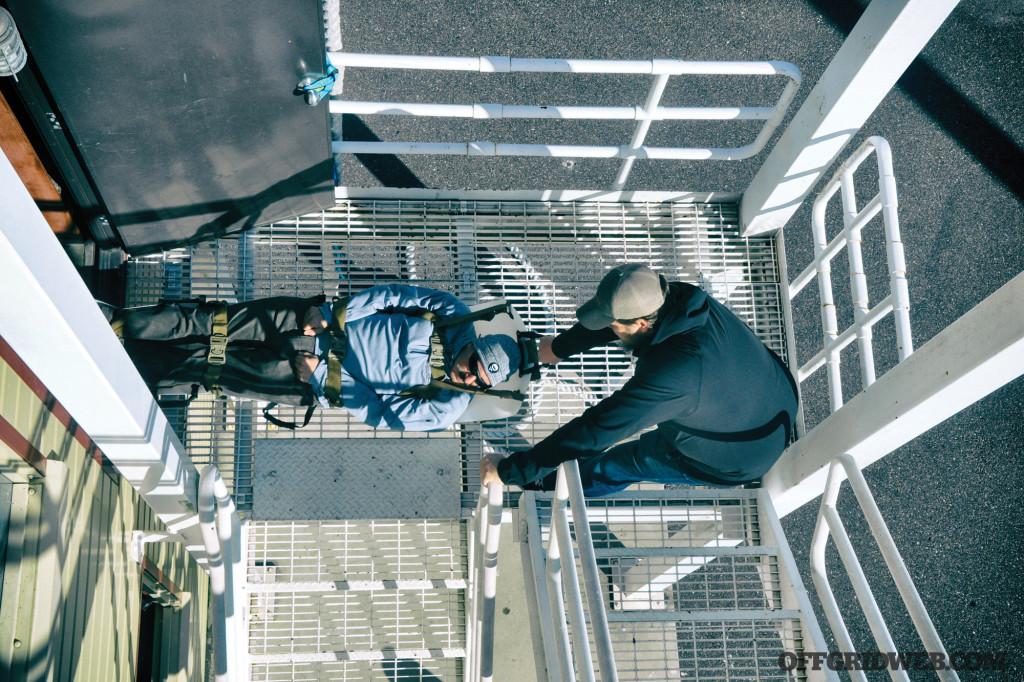
Can't find anything nearby to move someone who is injured? Why not carry something with you? The Foxtrot Litter...
Eric recommends training with commercial products where available, because having trained with good products will help show you how to improvise a solution when the time comes. “The more you use the commercial devices and formalized training,” Eric says, “the better you’ll be at building improvised solutions because you’ll better understand the concepts behind it.”
“Consider a commercial tourniquet, for example. If you’ve used one you’ll know that you need a strap, a windlass, and something to clip the tensioned windlass to. So don’t eschew the commercial options just thinking you can ‘wing it’ when you have to. Training with the real gear will help you wing it.”
When it comes to commercially available products, Eric has used several from Tactical Medical Solutions (TacMed Solutions) that he favors. First is the Foxtrot Litter. “The Foxtrot is the Cadillac of litters, and it’s relatively inexpensive,” Eric says. “It’s semi-rigid, striking a compromise between usefulness and portability. For its size you can use a two- or four-person carry, or just drag it on the ground as you would in a wilderness situation. A Skedco Sked (sled) is also cool, but usually that’s not available unless you’re traveling in a large vehicle or into overlanding with 4×4 Jeeps.”
For the photos seen in this article, we used a Rescue Task Force (RTF) version of the Foxtrot Litter, which uses somewhat beefed-up materials but is a similar concept. We also used the Evacuation and Rigging Strap (ER-S) from TacMed Solutions, which is inexpensive, small enough to be packed inside any bag, and lets you perform a drag, a backpack carry, or a modified half-litter carry on a casualty with a few simple loops of the strap around them.
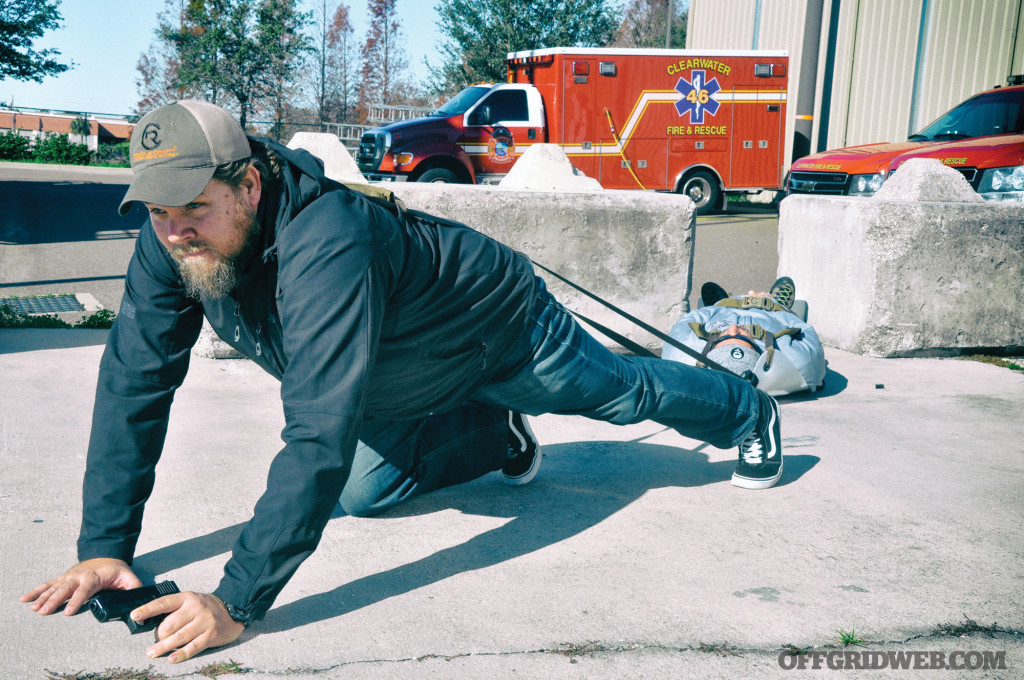
It can be used to carry a casualty in a low “bear-crawl” position, minimizing exposure by maintaining a low...
“Another soft litter is the Phantom from TacMed Solutions,” Eric says. “It can be thrown into a backpack or bag easily. The trade-off is that you can’t drag it very far or you’ll rip the sh*t out of it. It’s also super flexible, which actually makes it harder to carry when you consider the patient naturally flexing their knees and bending their hips.”
When it comes to deciding whether or not you should attempt to move casualties during an active shooter event, the recommendations are fairly simple. If the casualty is dead, then there’s no need to move them. And if you’re in a “hot zone” where the shooter is a direct threat to you, you should worry about protecting yourself with your own firearm if possible or evading instead. Otherwise, if you’re in a “warm zone” where the threat is still out there, but not directly in front of you, then you should attempt to move the injured casualty to safety.
Regardless of whether or not you suspect neck or spinal injuries, unless you have advanced tactical medical training, don’t spend time trying to stabilize the patient's neck or spine prior to evacuation. Chances are that you’ll just do it wrong anyway, compounding the issue and wasting invaluable time. Instead, focus simply on getting the casualty to professional care as soon as possible.
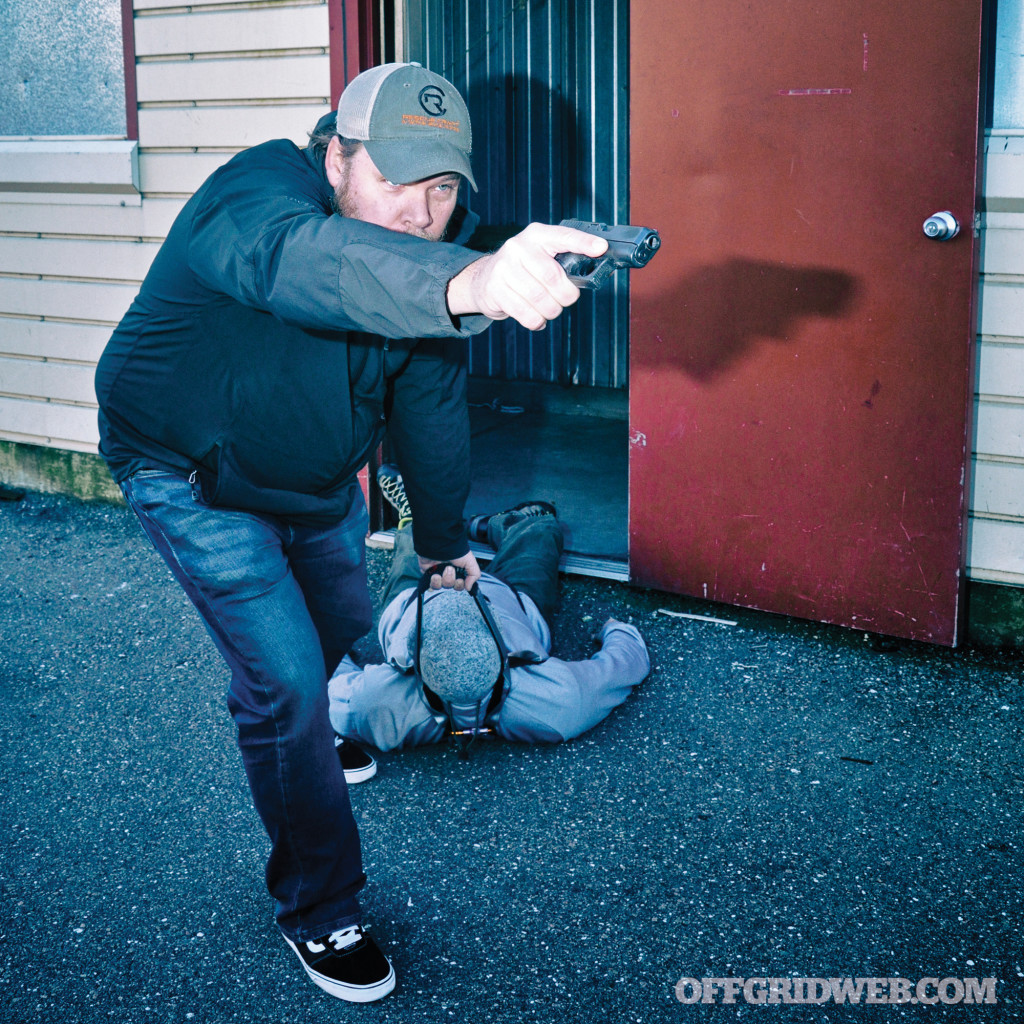
One way to use the ER-S strap from TacMed Solutions is to lay the casualty on their back and use the ER-S as a...
In a backcountry hiking or wilderness situation, it can be difficult, if not impossible, to evacuate an injured party to safety by yourself. In most situations it'll be safer for both you and the casualty if you leave him or her to shelter in place, and speed off by yourself to go find help. Otherwise, you run the risk of running out of supplies or dying of exposure on your way out because of the slowed pace when transporting casualties. The delay in medical care alone may doom the casualty. The better option is to quickly alert the local authorities, who can deploy a wilderness search-and-rescue team.
When you strap the patient into an aftermarket litters, consider strapping them so that they’re laying on their side as opposed to on their back, like you see in all the movies. This makes it easier for them to bend their bodies (or you to bend their body for them) in order to navigate tight corners or stairwells.
Think about it this way — if you’re laying on your back it’s quite difficult to arch your body into any configuration besides straight up and down. But if placed on your side, it’s easy to bend into an S-shape or maneuver to help you fit where you need to. This also has the added benefit of the patient being in the “recovery” position already, reducing the chances of choking on vomit or blood, and making it easier for them to breathe. You can also utilize a backpack, jackets, towels, etc., to prop them up into the recovery position, or use these items to place in “hot spots,” bony areas of the body that can take a beating if dragged in a litter over rough terrain.
To summarize our tips: Try to use your environment to help you, consider other ways besides doors to get out, and consider purchasing aftermarket litters to train with and carry with you. This way you’ll be helping not just yourself and your family, but possibly the larger community as well.
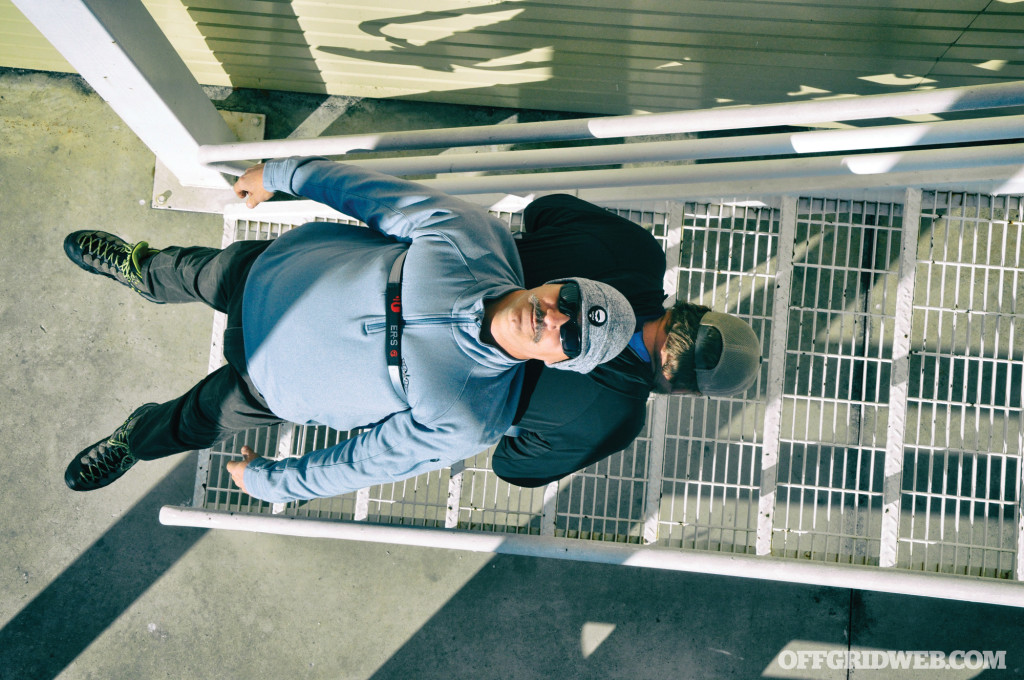
Applied in a different configuration, the ER-S can also be used to hoist a casualty and attach them to you like a...
“Part of being prepared is being able to enable the laypersons around you — showing them how to help others while you do it yourself,” Eric says. “So get your family involved, and your kids and community. Get them involved and thinking, it'll suck to have to carry some random casualty or your wife by yourself down three flights of stairs in order to escape a threat.”
It’s not easy to tell someone how to improvise ahead of time, for the same reason that it’s hard to predict the future. But formal training will give you a good foundation of skills to build on and make it easier to recognize improvisational opportunities when you find them. Here are some companies Eric recommends that teach patient/casualty movement as part of their courses.
Lone Star Medics
Special Operations Aid & Rescue (SOAR)
Talon Defense
If you can’t make it to one of these in-person classes, check out these two online resources that provide expert-approved guidance for civilians in active shooter situations.
Andrew Schrader recently served as an Advisor/Reviewer for the San Bernardino (California) City Fire Department’s After Action Report (AAR) of the Active Shooter Incident Response which took place in December 2015. His company, Recon Response Engineering LLC, educates firefighters and search and rescue teams on the subject of urban search-and-rescue and building collapse. Most recently, he was deployed in Florida to support rescue operations following Hurricane Irma. www.reconresponse.com
Don’t miss essential survival insights—sign up for Recoil Offgrid's free newsletter today!
Read articles from the next issue of Recoil Offgrid: Issue 26
Read articles from the previous issue of Recoil Offgrid: Issue 24
Check out our other publications on the web: Recoil | Gun Digest | Blade | RecoilTV | RECOILtv (YouTube)
Editor's Note: This article has been modified from its original version for the web.
 STAY SAFE: Download a Free copy of the OFFGRID Outbreak Issue
STAY SAFE: Download a Free copy of the OFFGRID Outbreak Issue
No Comments